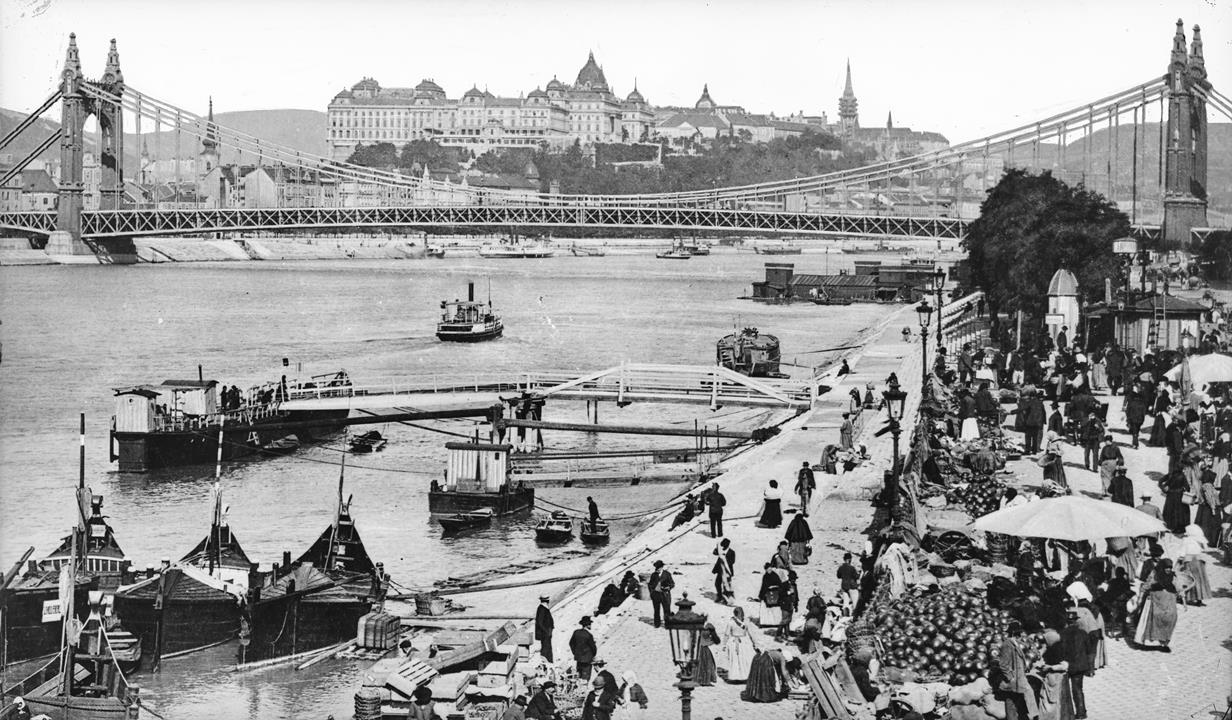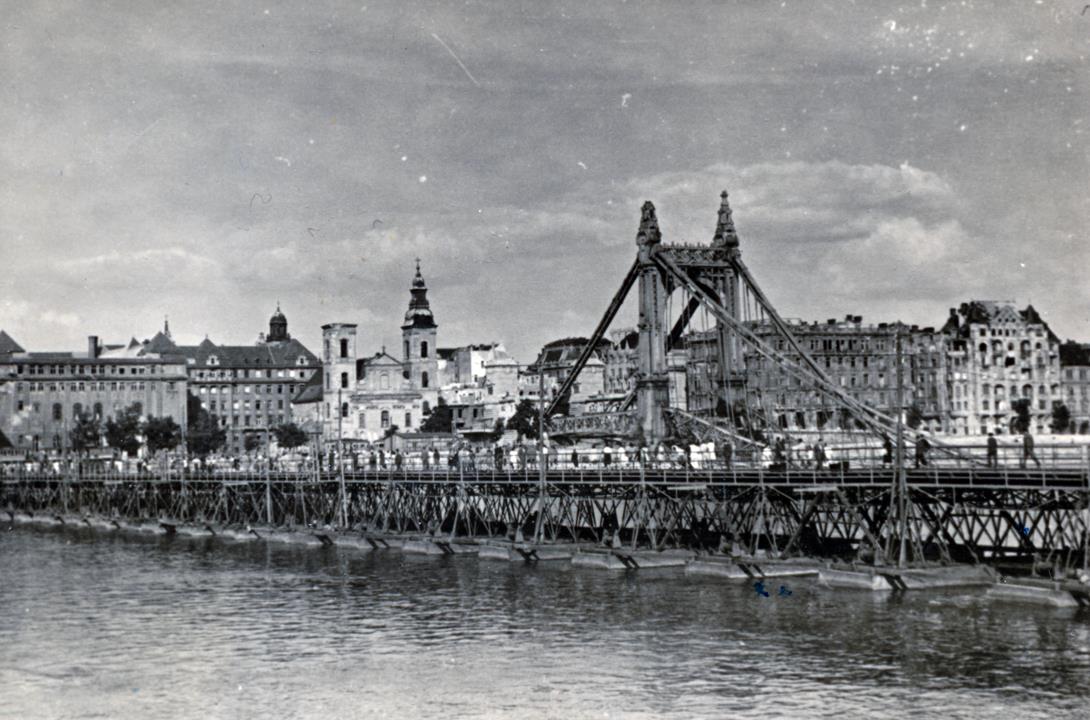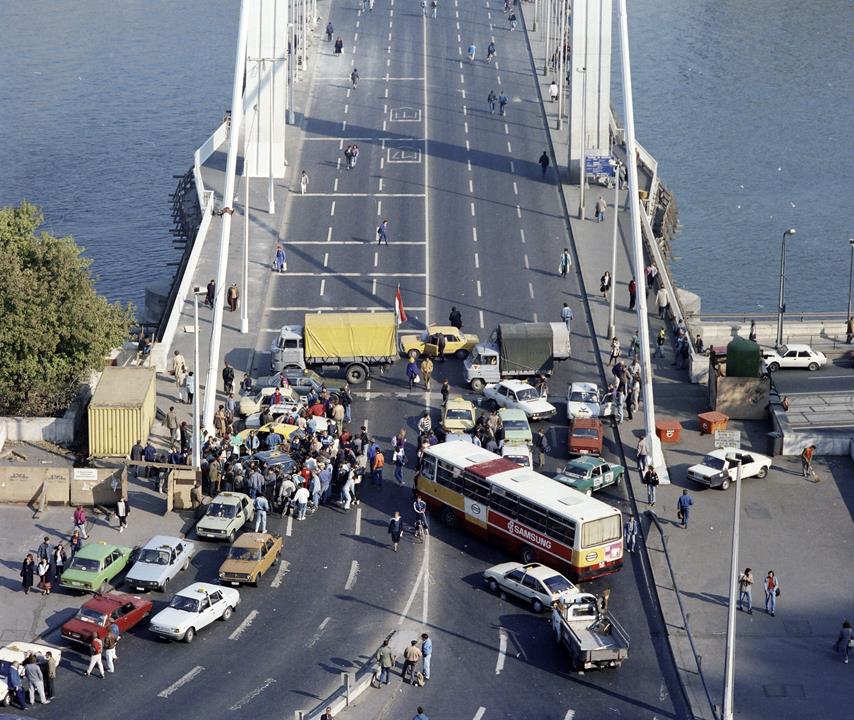PHOTO GALLERY with 8 interesting facts about Budapest’s magnificent Elizabeth Bridge

The Elizabeth Bridge in Budapest connects the 15 March Square with the feet of the Gellért Hill in Buda. Interestingly, the current bridge is quite new. The old Elizabeth Bridge was inaugurated in 1903 but destroyed by the German forces in 1944, before the Soviet siege of Budapest. It took almost two decades until the Communist-led Hungary found enough money to rebuild it in a simplified form.
New Budapest Bridge celebrated Empress Elizabeth, the friend of Hungarians
Empress (Queen) Elizabeth of Austria was not only one of the most beautiful women of the era but also the wife of Emperor Franz Joseph and a friend of Hungary, admired even by ordinary Hungarians. When she was murdered in 1898, the Hungarian nation decided to erect a Danube bridge to commemorate her in Budapest. The overpass was built between 1898 and 1903.

Interestingly, it was between the Franz Joseph Bridge (Szabadság Bridge – 1896) and István Széchenyi’s iconic Chain Bridge (1849). The second Danube bridge was the Margaret Bridge, connecting the Southern tip of Margaret Island with Buda and Pest.

The National Socialist leadership of Hungary tried to convince Adolf Hitler to declare Budapest as an open city like Paris before. However, Germany’s almighty Führer remained convinced to make Budapest a fortress (Festung Budapest) and resist the Soviet invaders as long as possible. That resulted in one of the longest sieges of WWII, causing tremendous destruction in the Hungarian capital, including the demolition of all Danube Bridges by German forces.

Money and will to rebuild Elizabeth Bridge only in the 1960s
As a result, most of the richly decorated Elizabeth Bridge sank under the water level and remained there until the 1960s since the Communist regime lacked both money and will to rebuild the bridge. The Elizabeth Bridge was the last of the Budapest bridges to be rebuilt after WWII in 1964. Thus, we can say it celebrated its 60th anniversary this year. The original date of inauguration was 7 November, but traffic could only return to the overpass on 21 November.
The new bridge was 10 metres wider than the old one, and they used the old bridge piles. The new steel bridge weighs 6,300 tonnes. Since it was inaugurated only in 1964, Hungarians could watch each moment live on TV since the first TV broadcast of the Hungarian Television started in May 1957, Lelépő wrote.
Originally, trams commuted on the bridge but it damaged its structure, so the tram line was halted in 1973 after the construction of metro line M2 was finished. The tram rails were removed in 1975.

Considerable Japanese contribution to decorative lighting
The decorative lighting of the bridge was created by the Japanese lighting designer Motoko Ishii. Furthermore, Japan covered half of its costs in 2009.
The bridge is 378.6 metres long, while its width is 27.1 metres. The designer was Pál Sávoly, who was inspired by the Mülheim Bridge in Cologne.

Read also:
- PHOTOS: New Danube bridge in Hungary inaugurated
- VIDEO, PHOTOS: Walking on Hungary’s record-breaking suspension bridge is an unrivalled experience
Source:









This is the ugliest bridge in the city. Better to demolish it and build it as it was before Soviet times.
Concur – Anonymous.
1960’s constructed of VILE architecture, no “blending” into our GLORIOUS bridges – down or up the Duna, to Margaret Bridge.
It has cost repair and construction MAJOR repair expenditure since its building that have NOTHING to do, with the original “Old” Bridge piles, used for it’s construction.
It’s ABOVE ground – the on-going problems REMAIN, and they will remain, through the highly questionable Design factor and Materials used in the bridge construction.
Ugly – to the eye – “outside” the style of our “other” HISTORIC bridges ?
WAS it a case not just on cost FACTOR when it got replaced in the 1960’s – after pest part of (2) two decades a “Felled” destroyed MESS, that this DESIGN, even though in Soviet Governed times, a “Fashion” statement ?
The 1960’s – was written, an accepted, even today, as one of the most creative periods of man-kind.
1945-1989 – Hungary – we MISSED out – BIG time.
The “new” style Elizabeth Bridge – is in its design tied up in that 1960’s – THING.
Funny that, because Hungary – “deeply” we remain of those years and older, and see US again, coming back as a country, that gives every indication, being our COMFORT Zone, in that we FUNCTION – for better or for Worse, more effectively – under a Dictatorial Government Regime.
Change – to bring about Change, we must, if we so DESIRE, must not be AFRAID, to take the first step(s).
We will FAIL – when we FAIL to TRY.”
100% agree with the comment above! This modernist bridge is completely out of character for Budapest. If there is no state money for reconstruction of the bridge in the original style, conduct a public lottery to fund it. The current hideous structure has got to go!
opiniões não se discutem. se escuta, ou leia, sorria baixinho e engula… Nada muda… O poder “divino” manda… Simcsik Tancsik Tibor
There is no beauty there- there is no beauty there – it was rammed into both ends with no regard to the beauty of the city. There is less than 4 inches between the the historic church on the pest end and ugly void below. The headline says it all- that many don’t understand what made Budapest what it is today and the beauty of the city. Painting the bridge bright white is so out of character with the city and the other bridges along with over 100 lights on both sides of the bridge like a high speed motorway. It would be used as an example of what not to do in bridge design for this location. I’m not suggesting rebuilding the beige YT blending it in both ends in one of the most beautiful cities in world. China builds one week bright white suspension structures. Germany should have been made to pay for the rebuild with wider deck